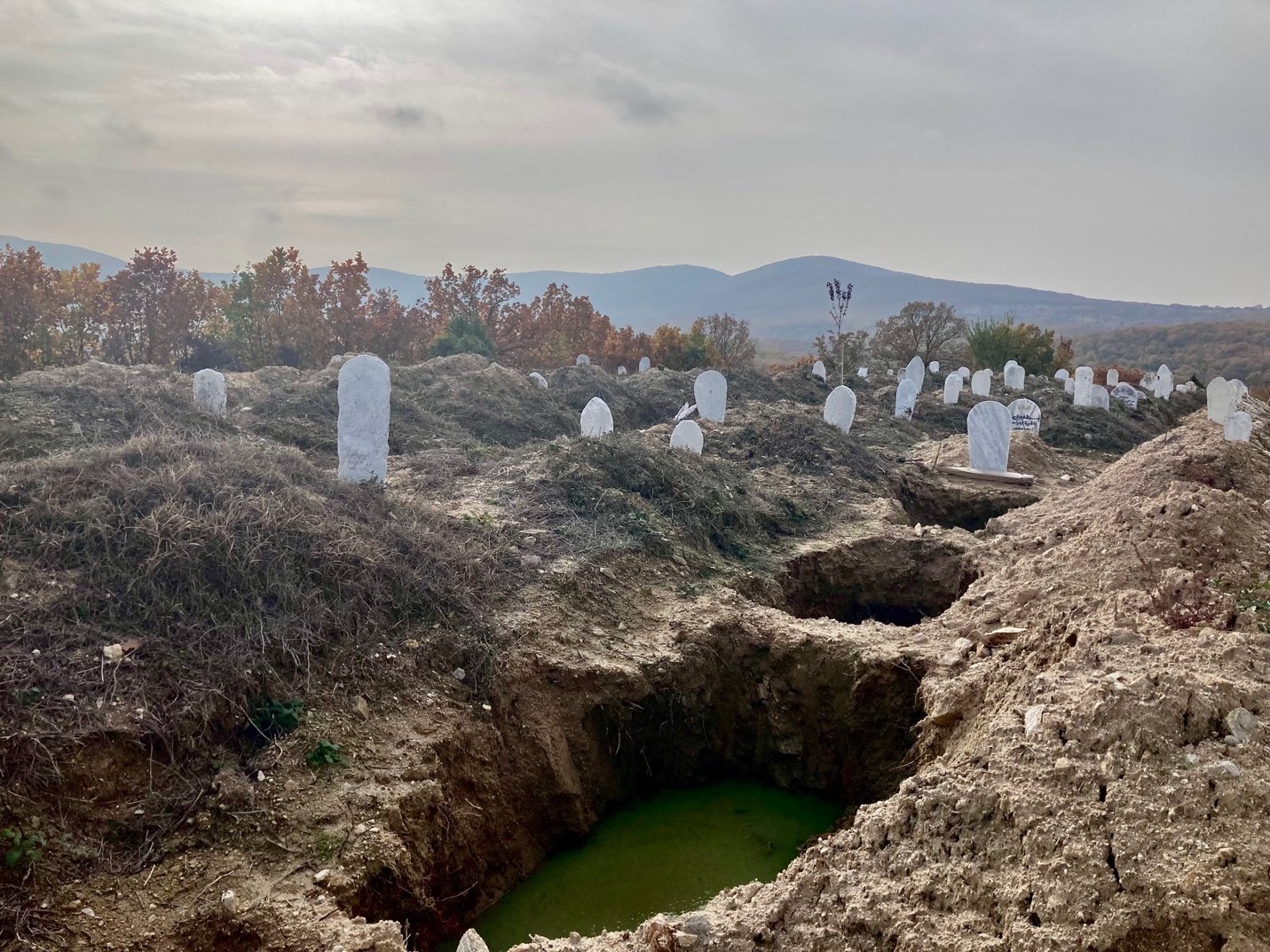Technologies of Violence at the World’s Sharpest Edges
Evros border between Greece and Turkey - ©Petra Molnar, 2021
The Greek village of Sidero near the Turkey border is flanked by golden poplars that cut through the landscape like sharp teeth. Just outside this small village lies a cemetery of unmarked graves, a resting place for those who died making the journey to Europe. Most graves do not have a name. Three or four have inscriptions sent to the Imam of this village by the families of the deceased, painstakingly hand-carved into the raw unpolished marble. Last time I was there, I touched the earth on the grave of a young woman who died on the 2nd of February, 2021. She was only 28 years old. Decayed bouquets of yellowed roses still lie atop her grave, a remnant of an act of care. While paying my respects, something green and putrid caught my eye – standing water in holes which have been crudely gnawed out of the earth. Three open graves await.
Borders kill. In December 2022, the Border Violence Monitoring Network and Member of the European Parliament Cornelia Ernst presented a report in Brussels showing an “unprecedented rise in border violence” for people on the move. Already violent global border policies are sharpened through the use of digital technologies developed for the purposes of border control and migration management.
77 border walls and counting are now cutting across the landscape of the world. These walls physical and digital, justifying broader surveillance under the guise of detecting illegal migrants and catching terrorists, and creating suitable enemies we can all rally around. With retinal scans in refugee camps, automated AI lie detectors at the airport, or robo-dogs chasing people across the Sonora Desert, borders serve as testing grounds for new technologies, places where regulation is deliberately limited and where an ‘anything goes’ frontier attitude informs the development and deployment of surveillance at the expense of people’s lives. These technologies separate families, push people into life-threatening terrain, and exacerbate the historical and systemic discrimination that is a daily reality for people on the move and other marginalized communities. These assertions are not merely theoretical. A December 2022 investigation by Human Rights Watch and Border Forensics shows that Frontex, the EU’s Border Force, is using aerial surveillance to assist in its border operations, enabling interceptions and returning people to Libyan detention and torture facilities. At the EU’s borders, more than 29,000 people have died on migration routes to Europe since 2014, while deaths have nearly tripled at the US-Mexico border due to people evading increasing surveillance.
As a lawyer and an anthropologist, I’ve spent the last 5 years tracking how new technologies of border management – surveillance, automated decision making, and various experimental projects – are playing out in migration control. Through years of my travels from Greece to Ukraine to Kenya to US/Mexico, I have seen time and again how frontier mentalities take over, creating environments of silence and violence. Trying to document this system of technological oppression is itself a risky business – one fraught with trying to unravel opaque government decisions, secretive private sector players, and witnessing horrific policy choices that challenge our common humanity. More and more governments are also turning their eyes towards those doing the work to shine a light on human rights abuses, like the spying scandal dubbed Greece’s Watergate, where spyware technologies have been found on the phones of journalists and political opposition members. I am definitely getting my own phone checked again.
Right now, almost no regulation exists around the use of border technologies, and even the EU’s proposed AI Act insufficiently deals with high risk technologies for borders and migration. There are also private sector interest that animate the reasons why more and more technology is being introduced at the border. Companies set the agenda and often their bottom line dictates which priorities matter and why we are using AI to discover liars at the border instead of using AI root out racist border guards. In the current global technological arms race and a lucrative border industrial complex worth billions of dollars, the use of technology is never neutral. It is a political exercise which highlights how the alure of quick fixes and the hubris of innovation does not address the systemic and historical reasons why people are marginalized and why they are forced to migrate in the first place. But as the EU doubles down on its policies of detention and deportation, and the US continues to expand its surveillance dragnet these policies are short-sighted. Millions of people will need to move as the environment degrades further. And technologies will not stop them from coming.
But when we really drill down, none of these conversations are just about technology. We are talking about power and politics, privilege and exclusion, as well as deeper questions around what we owe to one another in an increasingly divided world that pits us against each other, criminalizing migration and dehumanizing people who have every right to seek protection. I often think about the Sidero cemetery, a reminder how small acts of care like tending to an unmarked grave can make a brutal world a little bit less violent.

